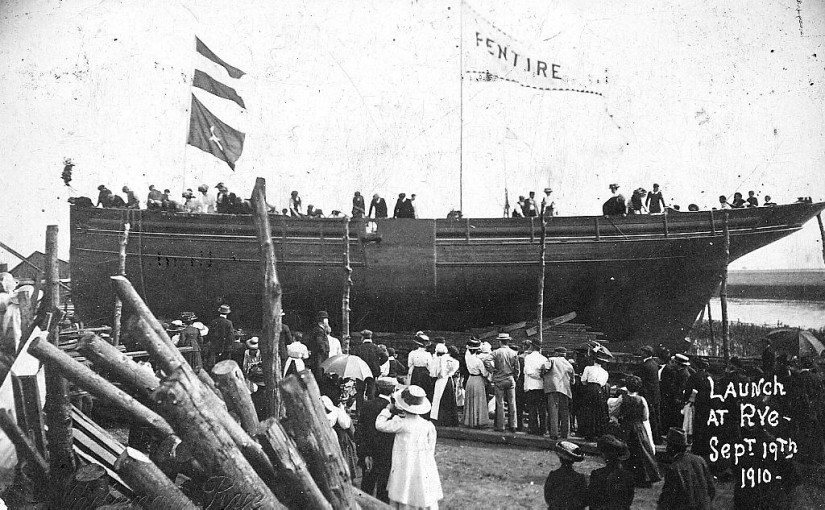The Hoad Ship Building Yard in Rye was famous for the first class vessels produced there but it was George Smith and his brother Thomas who are remembered by some senior citizens of this town as ‘the boat builders of Rye’
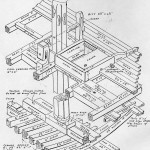
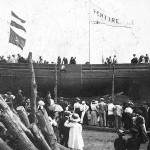
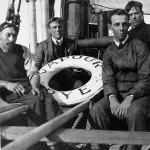
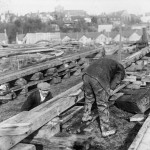
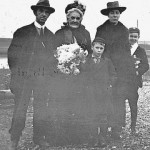
Born in 1831 at Fordwich, Kent the George Smith spent his early days in that town. His father was Mr. John Smith, whose name was held in quite as deep respect in that locality as was that of his son in Rye in later years. Upon attaining the age of 14 years a serious illness, consequent to liver problems, overtook him and upon recovery the doctor who had attended him, a Dr. Hovel, who was then practising in Canterbury, and an old Naval medico – inquired of his father what he intended doing with him. The father replied that he thought of apprenticing him to a saddler, upon which Dr. Hovel made answer that he would do well to do so if he wanted to kill him, adding that he should make a shipwright of him, as (he suffered from a sluggish liver). The active life entailed by the pursuit of the profession, coupled with the smell of tar, would prove beneficial. His father adopted the advice and the subject of this memoir was apprenticed at Sandwich, Kent to Messrs. Hoad Brothers formerly of Rye and a well-known shipbuilding firm. That the step was a wise one is borne out by the fact that George was later known to be one of the strongest men in Rye, and one upon whom the most arduous work had little or no effect. At Sandwich he remained until about 23 years of age and then, with a view to gaining a wider experience and to ultimately improving himself, he secured a position with Messrs. Green Brothers shipbuilders and owners of Blackwell London, who at that period were a prominent firm. The opportunity afforded by the change was not thrown away. Orders for war vessels consequent upon the outbreak of the Crimean War, gave him an insight into the profession he probably would not have otherwise gained. He remained with Messrs. Green until the termination of the War, and then accepted an engagement at Rye under his old employers Messrs. Hoad, who had a branch yard here, he came to our town where the rest of his life was subsequently spent. When Messrs. Hoad discontinued their business in 1884, he and his brother, Mr. Thomas Smith succeeded them and the famed era of the G & T Smith Ship Building Ltd. began.
The Yard became well known to shipowners in the West of England together with those of Great Yarmouth, Grimsby, Hull, Lowestoft and Ramsgate, also to those of other centres of the shipbuilding industry and at fishing ports. Mr. Weymouth, secretary to Lloyds of marine fame, was a personal friend and it is interesting to note that in 1875 a racing yacht was built at the Rye Yard for the a Mr.A.O. Wilkinson of London, the order being placed on the recommendation of Mr. Weymouth who was able to give guarantee that the work would be carried out in the best possible manner. The yacht was entered for many races in connection with one of the large Yachting Clubs. When the Northern fishing ports adopted steam for trawling purpose in lieu of the old type of sailing vessels, the firm turned their attention of the building of coastal barges, in which direction they did a large amount of work, including the carrying out of local commissions and orders from Dover,
London, Rochester etc.
Henry Jempson joined the Smith Yard as an apprentice and worked there for fifty years, eventually becoming a director of the firm.
It is characteristic of George Smith that when talking over the arrangements he desired made after his death he alluded to Mr. William Clarke, the first friend he made in Rye, thus showing the tenacity of his friendship and the strength of his regard. Just previous to his death he delivered his last messages to the members of his family, and as an illustration of his interest in his surroundings until he paid a subscription to the National Society for the Prevention of Cruelty to Children of which he was an ardent supporter, donating very shortly before he died. He then remarked that he had cleared up everything, and quoted a passage of Scripture from which he said he derived much comfort; “I shall be satisfied when I awake in His likeness”.
The business carried on and young Henry Jempson was soon a key man at the Yard. He was involved in the building of the cargo boat “Martinet”, a vessel named “Le Toquade” built for the French, the Kent Colebrooke a cargo ship and the “Dayspring” the last cargo vessel built in the Smith Yard.
“Rye’s Own”July 2004
All articles, photographs and drawings on this web site are World Copyright Protected. No reproduction for publication without prior arrangement. © World Copyright 2015 Cinque Ports Magazines Rye Ltd., Guinea Hall Lodge Sellindge TN25 6EG
